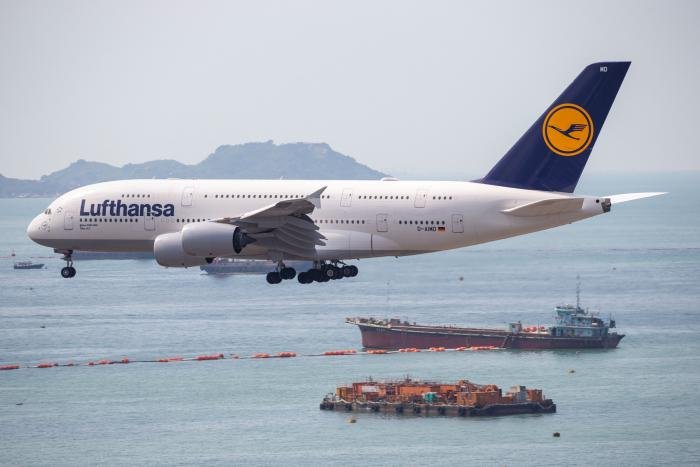German flag carrier Lufthansa has had to reduce the price of six A380s it is selling back to Airbus after they were damaged while in storage.
The buyback deal – which was first disclosed in March 2019 when the carrier placed an order for 40 next-generation widebody aircraft (20 Boeing 787-9s and 20 A350-900s) – was initially valued at €315m (£273m).
However, according to the airline’s interim financial report for the first quarter of 2023, due to “accident damage not covered by insurance policies, the valuations of five decommissioned Airbus A380s which are held for sale were reduced by €13m [£11.3m].”
| Aircraft included in Airbus buy-back deal | |||
|---|---|---|---|
| Registration | Serial No. | Delivery Date | Storage Location |
| D-AIMD | 48 | October 27, 2010 | Teruel, Spain |
| D-AIME | 61 | March 15, 2011 | Teruel, Spain |
| D-AIMF | 66 | March 31, 2011 | Teruel, Spain |
| D-AIMG | 69 | May 4, 2011 | Teruel, Spain |
| D-AIMI | 72 | May 14, 2012 | Tarbes Lourdes, France |
| D-AIMJ | 73 | June 13, 2012 | Teruel, Spain |
A Lufthansa spokesperson confirmed to Key.Aero that the damage was caused by a hailstorm which struck Teruel Airport.
The registrations of the aircraft included in the Airbus deal are confirmed to be D-AIMD (c/n 048, ME (c/n 061), MF (c/n 066), MG (c/n 069), MI (c/n 072), and MJ (c/n 073).
The new sale price of €302m (£262.1m) means each airframe is worth approximately €25m (£21.7m). This is a far cry from the price the airline likely paid for the double-deckers when they were acquired new. Not accounting for the heavy discounts airlines usually receive when buying aircraft, a brand-new A380 had a list price of around $445m (£358m), according to Airbus figures released in 2018.
At its peak, Lufthansa operated a fleet of 14 superjumbos, but the pandemic forced it to place the jets into deep storage.
In June 2022, the German airline confirmed it would reintroduce the double-decker into service for summer 2023 on high density routes from Germany to the United States.
Starting June 1, the A380 will fly services between Munich and Boston/Logan, a route that is currently being served by the A340-600.

Similarly, the following month flights to New York/JFK will be upgraded to the A380. Lufthansa hopes to have brought four of its superjumbos back online before the end of this year.
With 509 seats, Lufthansa’s A380 has almost 58% more capacity than the -600 quadjet. The German carrier configures its A380s with four classes comprising eight seats in first class, 78 in business, 52 in premium economy and 371 in economy.
Lufthansa cited a “significant increase in demand for airline tickets” and “the delayed delivery of ordered aircraft” behind the decision to reactivate the A380.

Meanwhile, ahead of next month’s return to service, the airline has been conducting training sorties for its pilots, primarily using D-AIMK (c/n 146). In just one week (May 11-18), the jet has conducted more than 25 flights, all of which have lasted less than an hour.
The German firm is not alone in bringing the A380 out of retirement. Carriers including Qantas, British Airways, Korean Air and Qatar Airways are all flying the double decker once again as demand for air travel soars. However others such as China Southern Airlines, Air France and Malaysia Airlines have grounded the double-decker permanently, citing high maintenance costs and fuel bills.


